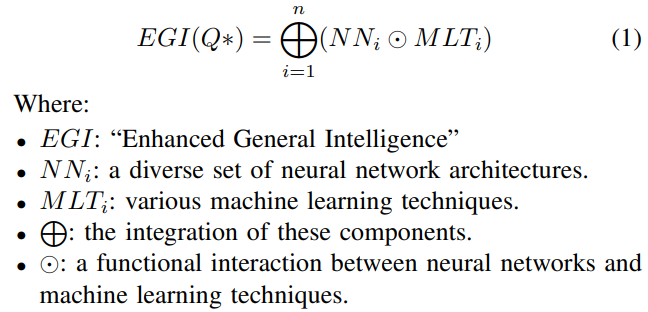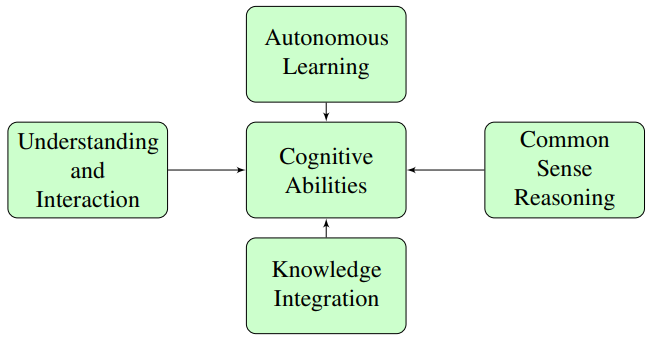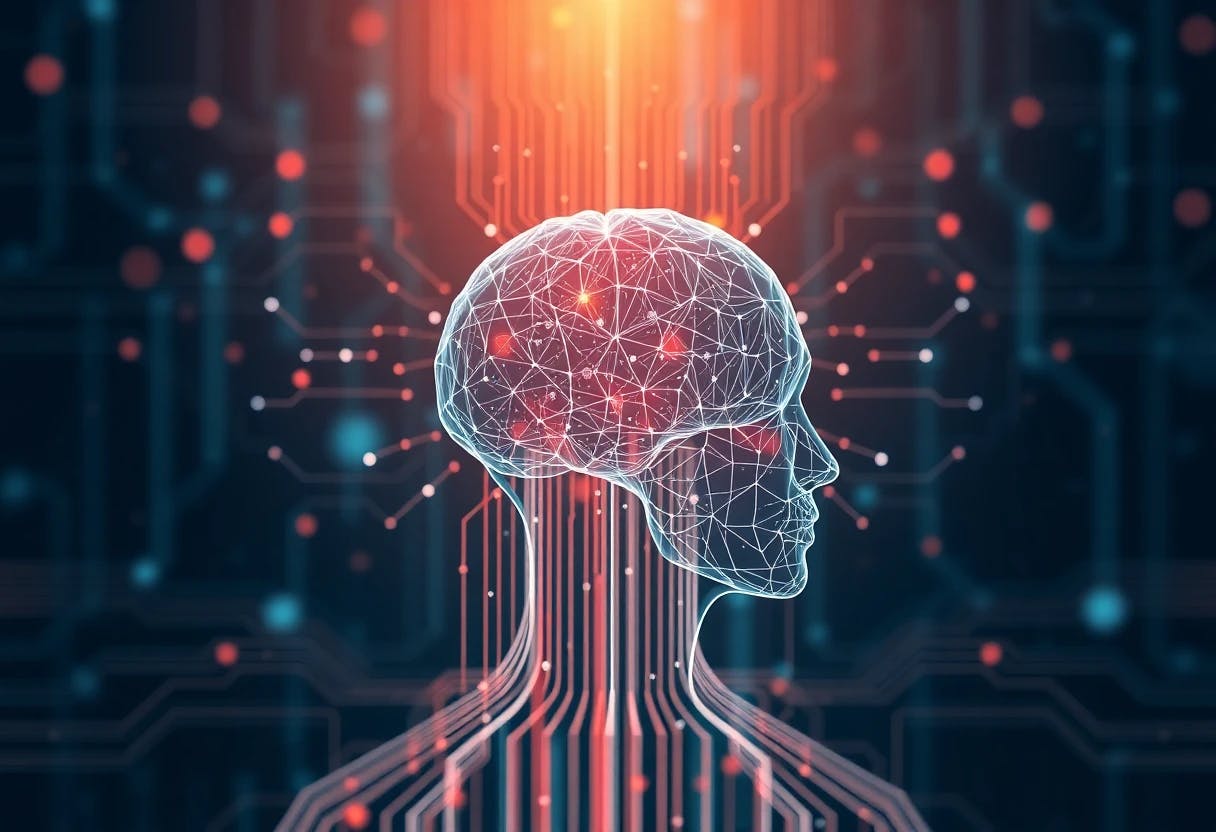Authors:
(1) Timothy R. McIntosh;
(2) Teo Susnjak;
(3) Tong Liu;
(4) Paul Watters;
(5) Malka N. Halgamuge.
Table of Links
Background: Evolution of Generative AI
The Current Generative AI Research Taxonomy
Impact Analysis on Generative AI Research Taxonomy
Emergent Research Priorities in Generative AI
Practical Implications and Limitations of Generative AI Technologies
Impact of Generative AI on Preprints Across Disciplines
Conclusions, Disclaimer, and References
V. SPECULATED CAPABILITIES OF Q*
In the burgeoning realm of AI, the anticipated Q* project stands as a beacon of potential breakthroughs, heralding advancements that could redefine the landscape of AI capabilities (Fig. 5).
A. Enhanced General Intelligence
Q*’s development in the arena of general intelligence represents a paradigm shift from specialized to holistic AI, indicating a broadening of the model’s cognitive abilities akin to human intelligence. This advanced form of general intelligence involves integrating diverse neural network architectures and machine learning techniques, enabling the AI to process and synthesize multifaceted information seamlessly. The universal adapter approach, mirroring models like T0, could endow Q* with the capability to rapidly assimilate knowledge from various domains. This method allows Q* to learn adaptable module plugins, enhancing its ability to tackle new data types while preserving existing skills, leading to an AI model that combines narrow specializations into a comprehensive, adaptive, and versatile reasoning system. The corresponding quasi-mathematical formulation can be expressed as:

Such advancements in AI suggest the emergence of an intelligence that not only parallels but potentially exceeds human cognitive flexibility, with far-reaching implications in facilitating cross-disciplinary innovations and complex problem-solving. The speculated capabilities of Q* bring forth complex ethical implications and governance challenges. As AI systems approach higher levels of autonomy and decision-making, it is crucial to establish robust ethical frameworks and governance structures to ensure responsible and transparent AI development. This involves mitigating potential risks associated with advanced AI capabilities, emphasizing the need for comprehensive and dynamic ethical guidelines that evolve in tandem with AI advancements.
B. Advanced Self-Learning and Exploration
In the realm of advanced AI development, Q* is anticipated to represent a significant evolution in self-learning and exploration capabilities. It is speculated to utilize sophisticated Policy Neural Networks (NNs), similar to those in AlphaGo, but with substantial enhancements to handle the complexities of language and reasoning tasks. These networks are expected to employ advanced reinforcement learning techniques like Proximal Policy Optimization (PPO), which stabilizes policy updates and improves sample efficiency, a crucial factor in autonomous learning. The integration of these NNs with cutting-edge search algorithms, potentially including novel iterations of Tree or Graph of Thought, is predicted to enable Q* to autonomously navigate and assimilate complex information. This approach might be augmented with graph neural networks to bolster meta-learning capacities, allowing Q* to rapidly adapt to new tasks and environments while retaining previously acquired knowledge. The corresponding quasi-mathematical formulation can be represented as:
ASLE(Q∗) = RL(P NN, SA) × GNN
Where:
• ASLE: “Advanced Self-Learning and Exploration”
• RL: to reinforcement learning algorithms, particularly Proximal Policy Optimization (PPO).
• PNN: Policy Neural Networks, adapted for language and reasoning tasks.
• SA: sophisticated search algorithms, like Tree or Graph of Thought.
• GNN: the incorporation of Graph Neural Networks for meta-learning.
• ×: the cross-functional enhancement of RL with GNN.
Such capabilities indicate a model not limited to understanding existing data but equipped to actively seek and synthesize new knowledge, effectively adapting to evolving scenarios without the need for frequent retraining. This signifies a leap beyond current AI models, embedding a level of autonomy and efficiency previously unattained.
C. Superior Human-Level Understanding
Q*’s aspiration to achieve superior human-level understanding is speculated to hinge on an advanced integration of multiple neural networks, including a Value Neural Network (VNN), paralleling the evaluative components found in systems like AlphaGo. This network would extend beyond assessing accuracy and relevance in language and reasoning processes, delving into the subtleties of human communication. The model’s deep comprehension capabilities may be enhanced by advanced natural language processing algorithms and techniques, such as those found in transformer architectures like DeBERTa. These algorithms would empower Q* to interpret not just the text but also the nuanced socio-emotional aspects such as intent, emotion, and underlying meanings. Incorporating sentiment analysis and natural language inference, Q* could navigate layers of socio-emotional insights, including empathy, sarcasm, and attitude. The corresponding quasi-mathematical formulation can be expressed as:

Where:
• SHLU: “Superior Human-Level Understanding”.
• VNN: the Value Neural Network, similar to evaluative components in systems like AlphaGo.
• NLP: a set of advanced NLP algorithms.
• ⊕: the combination of VNN evaluation with NLP algorithms.
• alg: individual algorithms within the NLP set.
This level of understanding, surpassing current language models, would position Q* to excel in empathetic, context aware interactions, thus enabling a new echelon of personalization and user engagement in AI applications.
D. Advanced Common Sense Reasoning
Q*’s anticipated development in advanced common sense reasoning is predicted to integrate sophisticated logic and decision-making algorithms, potentially combining elements of symbolic AI and probabilistic reasoning. This integration aims to endow Q* with an intuitive grasp of everyday logic and an understanding akin to human common sense, thus bridging a significant gap between artificial and natural intelligence. Enhancements in Q*’s reasoning abilities might involve graphstructured world knowledge, incorporating physics and social engines similar to those in models like CogSKR. This approach, grounded in physical reality, is expected to capture and interpret the everyday logic often absent in contemporary AI systems. By leveraging large-scale knowledge bases and semantic networks, Q* could effectively navigate and respond to complex social and practical scenarios, aligning its inferences and decisions more closely with human experiences and expectations. The corresponding quasi-mathematical formulation can be represented as:

Where:
• ACSR: “Advanced Common Sense Reasoning”.
• LogicAI and ProbAI: symbolic AI and probabilistic reasoning components, respectively.
• WorldK: the integration of graph-structured world knowledge.
• ⊙: the integrated operation of these elements for common sense reasoning.
E. Extensive Real-World Knowledge Integration
edge is speculated to involve the use of advanced formal verification systems, which would provide a robust basis for validating its logical and factual reasoning. This method, when

coupled with sophisticated neural network architectures and dynamic learning algorithms, would enable Q* to engage deeply with the complexities of the real world, transcending conventional AI limitations. Additionally, Q* might employ mathematical theorem proving techniques for validation, ensuring that its reasoning and outputs are not only accurate but also ethically grounded. The incorporation of Ethics classifiers in this process further strengthens its capacity to deliver reliable and responsible understanding and interaction with real-world scenarios. The corresponding quasi-mathematical formulation can be represented as:

Where:
• ERWKI: “Extensive Real-World Knowledge Integration”.
• F V S: Formal Verification Systems.
• NN: neural network architectures.
• LT P: mathematical theorem proving for logical and factual validation.
• EC: the incorporation of Ethics classifiers.
• ⊗: the comprehensive integration for knowledge synthesis and ethical alignment.
Furthermore, the speculated capabilities of Q* have the potential to significantly reshape the job market and labor dynamics. With its advanced functionalities, Q* could automate complex tasks, leading to a shift in job requirements and the emergence of new skill demands. This necessitates a reevaluation of workforce strategies and educational paradigms, aligning them with the evolving technological landscape and ensuring that the workforce is equipped to interact with and complement these advanced AI systems.
This paper is available on arxiv under CC BY-NC-ND 4.0 DEED license.

